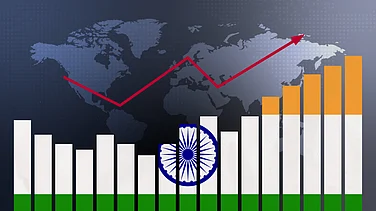The evolution of the geopolitical landscape should have a significant impact on the global trade and investment landscape. Though India has strengthened trade with the US in the past few years, the time is now ripe to proactively recalibrate our trade and economic strategies aligned towards the EU, our largest trading partner. India’s emphasis on sustainability measures is bound to make this transition smoother, considering the European Union is recognised as a leader in the sustainability agenda.
This alignment to suit the new geographical need would mean capital flows should be directed towards transition finance and green investments. The absence of this gives the impression that high-emission industries are not being supported in their transition towards low-carbon alternatives. Interestingly, government economic policies are fundamentally in line with its long-term de-carbonisation objectives and offer the required momentum to carry out the green transition in a synchronised manner.
In the global pursuit of net zero emissions, India emerges as a unique player that is slowly but steadily poised to win the race. Our methodical approach positions us to smartly harness international financing. We already have the world’s largest solar park at Bhadla, Rajasthan and are swiftly building a bigger hybrid park at Khavda, Kutch.
Additional innovations such as Floating Solar Parks and transition to greener fuels are also undertaken with a confluence of government and private sector initiatives. Together, these projects will propel the adoption of efficient, low-emission technologies, an approach that lays the bedrock for a sustainable future, rather than just curbing existing emissions.
In its quest for net zero and a sustainable future, India is leveraging one of the most effective mechanisms of the carbon credit market. Leading global organisations, such as Shell, Michelin Group, Microsoft, and Amazon, among others, are proactively purchasing carbon credits from Indian entities. These credits offset their greenhouse gas (GHG) emissions. One Carbon Credit (CC) allows an organisation to offset one tonne of carbon dioxide or the equivalent GHG emissions. This offers a twin advantage, allowing buyers to meet their zero-emission goals and facilitating the much-needed financing for sellers.
Indian carbon credits, which comprise 15-20% of global credit supplies, have generated an inflow of $2 billion in 2023. This influx of funds is crucial for enabling Indian companies to adopt and utilise low-carbon technologies effectively. The financial support helps us bridge the gap between the high initial costs of these technologies and their long-term benefits, creating a positive ripple effect of environmental and economic gains. Though India’s carbon market is not very developed in comparison to other countries, especially in the European Union, this stark difference offers it the required market. Alignment towards the EU would mean the establishment of stringent carbon trading mechanisms that enforce accountability with improved momentum.
India is also a key global food supplier, a position of immense responsibility. We need to ensure sustained food supplies irrespective of climate conditions. This is one important element that if focused, can present India as an important trade partner for the EU. For instance, India's export restrictions on rice in 2023, due to limited domestic supplies from lower rainfall, led to a spurt in international prices. Consequently, global prices fell sharply when these restrictions were lifted in October 2024.
Historically, monsoons have been a major driver of Indian economic growth, given our agricultural dependence. The favourable rains in July and August 2024 positively impacted food inflation, only for it to rise again due to excess rains in September.
The increased trading with the EU should also unlock our market’s full potential and bring in clear pricing mechanisms, compliance requirements and enforcement of policies. It will also establish a cap-and-trade system where companies are incentivised to reduce emissions through market-driven penalties and rewards that create a robust framework for emissions. Linking India’s carbon market with international carbon trading platforms can enhance its efficiency, further strengthening technological development in the agriculture sector.
(The author is the Group CEO at Acuite.)
(Views expressed above belong solely to the author.)


























